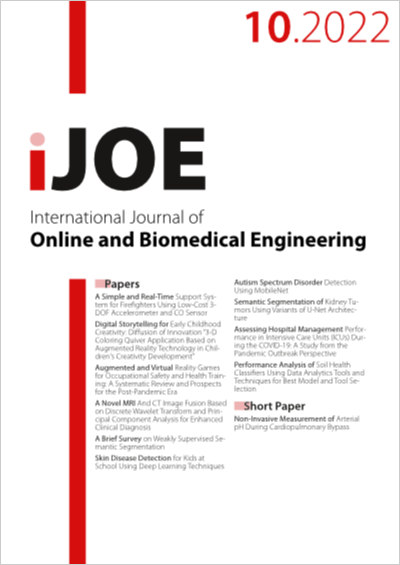Performance Analysis of Soil Health Classifiers Using Data Analytics Tools and Techniques for Best Model and Tool Selection
DOI:
https://doi.org/10.3991/ijoe.v18i10.30149Keywords:
Classifier, Model performance, Analytical tools, Machine Learning, Soil Data Analysis, Bibliometric AnalysisAbstract
One of the most crucial stages in the building of a Machine Learning (ML) model is the evaluation and analysis of classifier model performance. The agricultural sector is the economic backbone of India and needs extensions to provide solutions to the problems faced by the farmers. This paper presents agriculture soil health analysis using Machine Learning approaches for best model and tool selection and also bibliometric analysis to identify different sources and author’s keywords for finding the area of focus for proposed work. Models are built on SK-Learn, KNIME, WEKA and Rapid Miner tools using different ML algorithms. Nave Bayes, Random Forest (RF), Decision Tree (DT), Ensemble learning (EL), and k-Nearest Neighbor (KNN) are used to analyze soil data on these tools. Results show that Decision Tree model outperforms other algorithms, followed by RF algorithm which is a set of multiple Decision tree algorithms and SK-Learn tool gives better accuracy followed by WEKA tool then KNIME tool. Maximum accuracy obtained by Decision Tree algorithm is 98.40% using SK-Learn followed by KNIME tool with 73.07%, Maximum accuracy obtained by Naïve Bayes algorithm is 69.50% using SK-Learn followed by KNIME tool with 68.14%, maximum accuracy obtained by Random Forest algorithm is 85.00% using SK-Learn followed by 73.06% using WEKA tool, maximum accuracy obtained by Ensemble algorithm is 89.00% using SK-Learn followed by 73.06% using WEKA tool and for KNN it is 95.50% using SK-Learn followed by 71.85% using WEKA tool.
Downloads
Published
How to Cite
Issue
Section
License
Copyright (c) 2022 Sushma Rahul Vispute, Madan Lal Saini

This work is licensed under a Creative Commons Attribution 4.0 International License.



